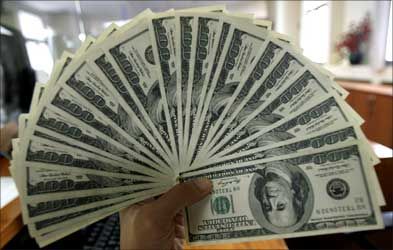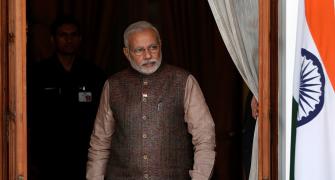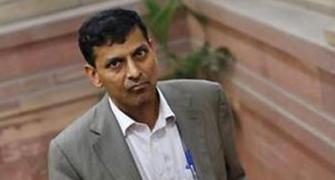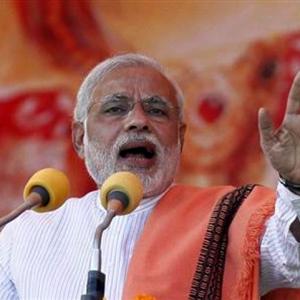 The Federal Reserve must now ensure that higher inflation doesn't derail the US recovery, says Martin Feldstein.
The Federal Reserve must now ensure that higher inflation doesn't derail the US recovery, says Martin Feldstein.
Last December, I speculated that GDP growth in the United States would rise in 2014 from the subpar 2 per cent annual rate of the previous four years to about 3 per cent, effectively doubling the per capita growth rate.
Now that the US economy is past the impact of the terrible weather during the first months of the year, output appears to be on track to grow at a healthy pace.
The primary driver of this year's faster GDP growth is the $10-trillion rise in household wealth that occurred in 2013.
According to the United States Federal Reserve, that increase reflected a $2-trillion increase in the value of homes and an $8-trillion rise in the value of shares, unincorporated businesses, and other net financial assets.
As former Federal Reserve Chairman Ben Bernanke explained when he launched large-scale asset purchases, or quantitative easing, that increase in wealth - and the resulting rise in consumer spending - was the intended result.
Past experience suggests that each $100 increase in household wealth leads to a gradual rise in consumer spending until the spending level has increased by about $4.
That implies that the $10-trillion wealth gain will raise the annual level of consumer spending by some $400 billion, or roughly 2.5 per cent of GDP. Even if less than half of that increase occurs in 2014, it will be enough to raise the total GDP growth rate by one percentage point.
The data show that a significant increase in consumption already is happening. Real personal consumption expenditures rose at a 3 per cent rate from the fourth quarter of 2013 to the first quarter of this year.
Within the first quarter, the monthly increase in real consumer spending accelerated from just 0.1 per cent in January to 0.4 per cent in February and 0.7 per cent in March.
That was faster than the 0.3 per cent monthly growth in real personal disposable income during this period, highlighting the importance of wealth as a driver of spending.
Another indication of the role of wealth in fuelling higher consumer spending is the decline in the household saving rate. Total household saving as a percentage of disposable income fell from about 6 per cent in 2011 and 2012 to just 3.8 per cent in the most recent quarter.
Housing starts are also responding to the increase in wealth. The number of housing starts and the value of residential construction fell after the Fed's announced withdrawal from quantitative easing caused interest rates on mortgages to rise.
But that has turned around, with housing starts in April up 26 per cent year on year. And sales of both new and existing homes have recently been rising more rapidly as well.
Higher consumer spending and increased residential investment boosted demand for labour, resulting in a rise in payroll employment of 288,000 in April, up from a monthly average of less than 200,000 earlier in the year. If that continues, it will lead to a faster rate of increase in household incomes and spending.
The favourable effect of the increase in household wealth is being reinforced this year by the improved fiscal position. The economy in 2013 was held back by tax increases, government spending cuts mandated by the sequester process, the temporary government shutdown, and the possibility that a binding debt ceiling would require further cuts in government outlays.
Though the prospect of a rising deficit and national debt in the longer term remains, the two-year budget agreement enacted by the US Congress means that the economy will not be subject to such negative fiscal shocks in 2014 or 2015.
The key challenge confronting the economy in the next two years will be faced by the Fed, which must control the inflationary pressures that could emerge as commercial banks respond to a healthier economy by increasing lending to businesses and households.
The commercial banks have a great deal of liquidity, in the form of excess reserve deposits at the Fed, which could make inflationary lending a significant risk.
The banks are now content to leave those funds at the Fed, where they earn a mere 0.25 per cent because they are risk-free, completely liquid, and unburdened by capital requirements. The alternative is to lend commercially at relatively low interest rates, with less liquidity, more risk, and the need to provide capital.
But the time will come when the banks will want to use their excess reserves to support more profitable lending. The Fed will then need to raise the interest rate that it pays on excess reserves to limit the extent to which the commercial banks can draw down those reserves to create additional lending and deposits.
That will be a difficult balancing act. If the interest rate is raised too little, banks will use more reserves to support lending, leading to higher inflation. If the interest rate is raised too much, economic activity will be constrained and growth could fizzle.
The situation now has diverged from the traditional scenario in which the Fed controlled the banks' use of reserves by adjusting the federal funds rate (the rate at which banks lend their reserves to one another). The principle difference is that the Fed will now have to pay the interest on the nearly $2.5 trillion of excess reserves that it holds.
The US economy is now on a favourable path of expansion. But keeping it there will be a major challenge for the Fed in the year ahead.
The writer is professor of economics at Harvard University.










